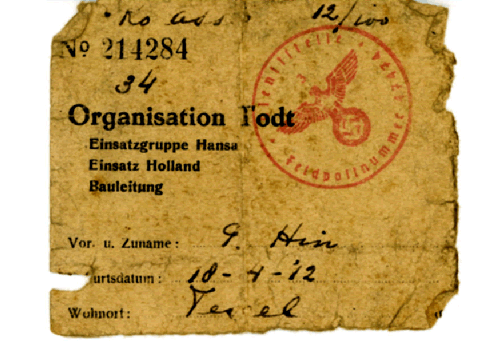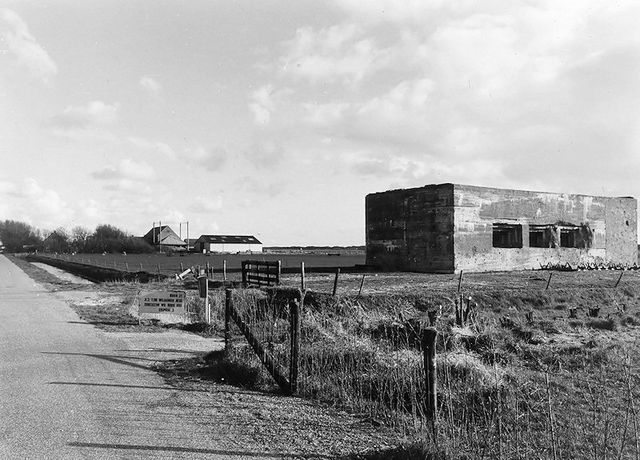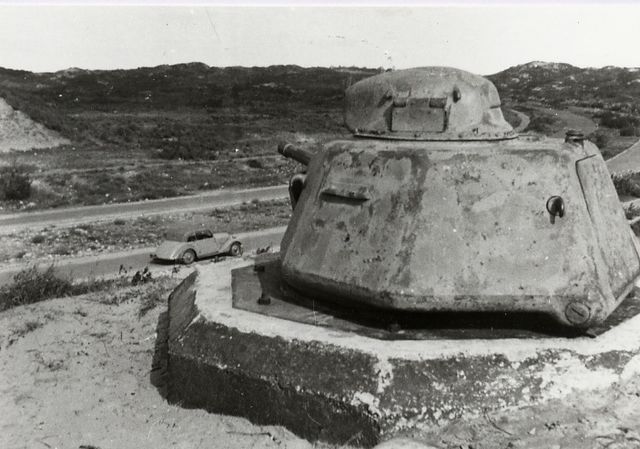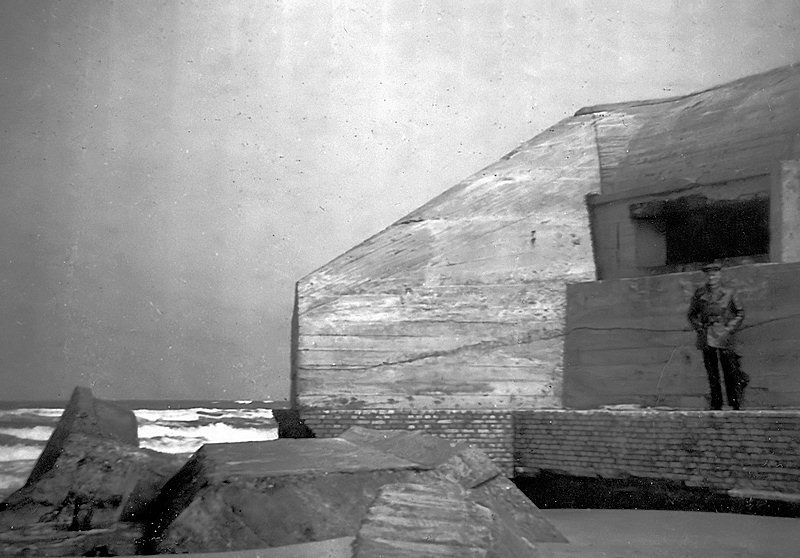Standardisation of the bunker design
Most bunkers were built according to standard designs, but this time by the army, navy and air force. Building bunkers using standardised designs, Regelbauten, has enormous advantages. Everything about the building is predetermined: the different areas and their functions, the type of artillery, construction time, the amount of concrete and reinforced steel needed.
The principal idea was that a bunker type with a certain function could always be built in the same way, whether it was in Norway, Belgium or Denmark. However, this did not always prove to be the case. Geographic circumstances sometimes led to the need for minor or major modifications. The materials needed were also often not available, so the construction of the standard design had to be altered.
Organisation Todt
Organisation Todt (OT), named after its founder Fritz Todt, coordinated and organised the construction process. They received orders from the various army regiments and took care of materials, transport and hiring contractors. They were often local contractors, although there were also German contractors in the occupied areas. One of these was the - at the time colossal - contracting firm Wayss und Freytag, now an unprofitable part of Dutch contractors BAM.

Sonderbauten
In addition to the standard designs, there were also one-off bunkers, the so-called Sonderbauten, where the concrete layers could be up to 5 metres. The enormous ship bunkers in the harbours on the French and Norwegian Atlantic coast are well known, as are the Schnellbootbunkers that were built in the Netherlands. Some command centres and construction bunkers for the V weapons, V1 and V2 in Northern France, were Sonderbauten. There were also specific bunkers for the extremely heavy naval artillery that was installed in 1940 near the Strait of Dover and along the Norwegian coast.
Widerstandsnest
The support points were built according to a specific system which was implemented throughout the entire line. The smallest unit is the Widerstandsnest.
Stützpunkt
Several of these Widerstandsnester together formed a Stützpunkt.
Stützpunktgruppe
Several of these together formed a Stützpunktgruppe.
Verteidigungsbereich
And several Stützpunkte and Stützpunktgruppen together formed a Verteidigungsbereich. The most important harbours received the status of Verteidigungsbereich. In the Netherlands, these were Den Helder, IJmuiden, Hook of Holland and Vlissingen. In January 1944, Hitler gave IJmuiden and Hook of Holland the status of Festung. Stützpunktgruppe Delfzijl became part of Festung Emden. A Festung was not actually better equipped than a Verteidigungsbereich, but it was located in a more strategically important spot. Less important support points were built as Stützpunktgruppe.
Freie Küste
The coast between the Verteidigungsbereiche and Stützpunktgruppen was designated as Freie Küste. Stand-alone Widerstandsnester and Stützpunkte defended this part of the coast.
-
Various types
Various types

-
Types of bunkers
Types of bunkers

